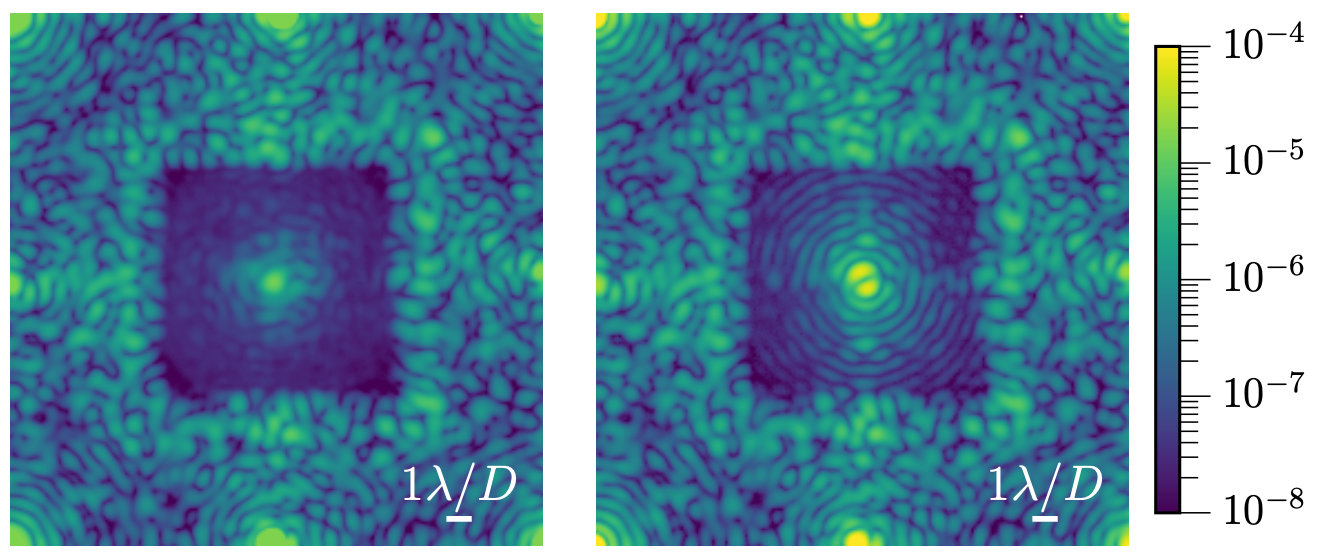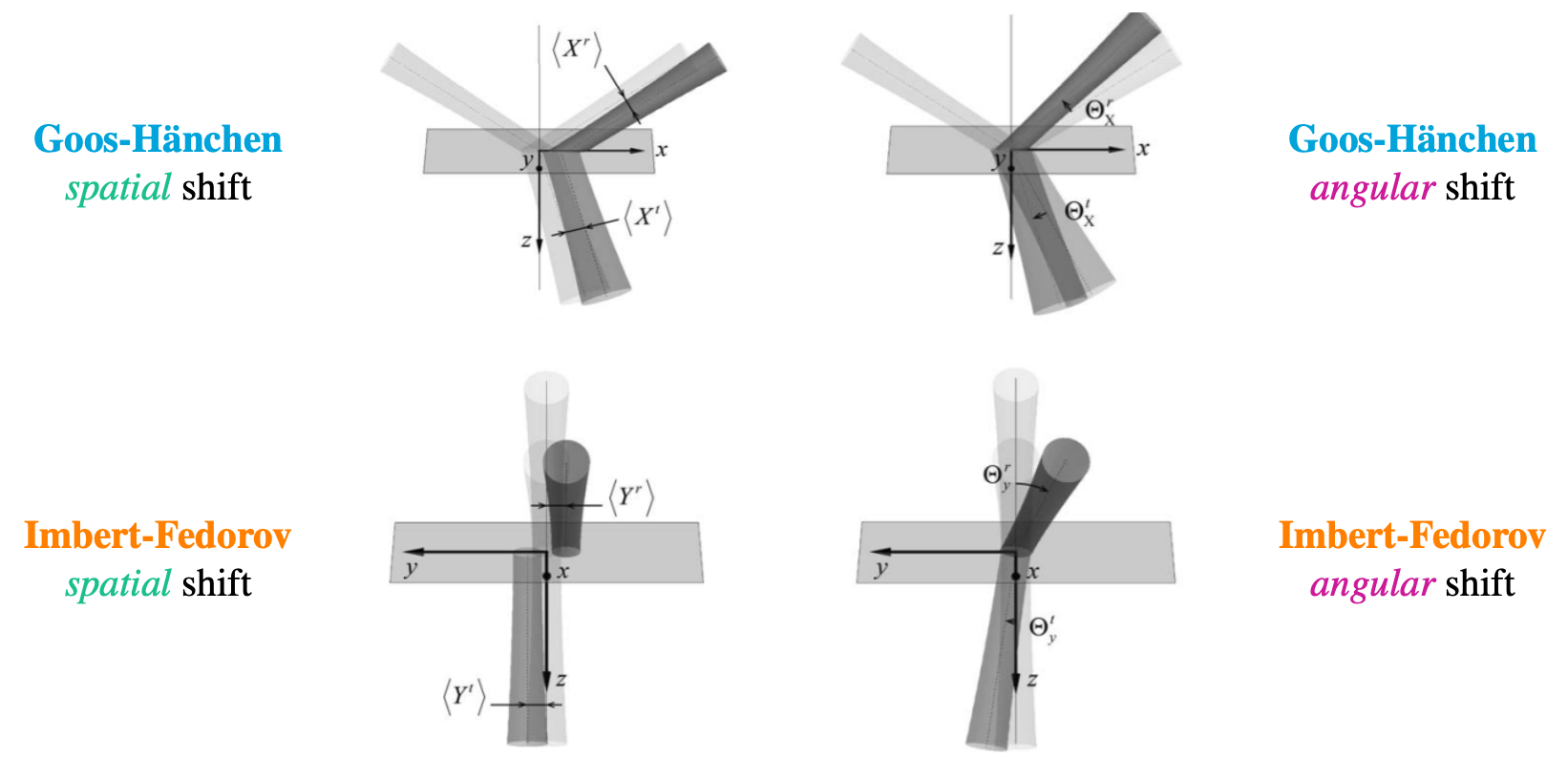Limitations from polarization effects
Master research project (4 months at Observatoire de Paris, Paris, France, under the supervision of Pierre Baudoz and Raphaël Galicher)
Fifteen years after the first-ever image of an exoplanet by Chauvin et al. (2004) with the VLT/NaCo telescope and instrument, second generation instruments are currently operational to directly image exoplanets with high angular resolution and high contrast imaging techniques, such as SPHERE at the VLT (Chile), GPI at Gemini South (Chile) but being currently relocated to Gemini North (Hawaii) and SCExAO at Subaru (Hawaii).
Developing such instruments require testbed and the Très Haute Dynamique 2 bench (THD2 bench) is unique in Europe for high-contrast imaging. However, polarization effects are present on the bench and cause aberrations. They could be linked to the Goos-Hänchen and Imbert-Fedorov effects which both cause spatial shifts and angular deviations, respectively longitudinal and transversely. Although these effects have already been investigated in the literature on optic and quantum mechanic perspectives, there are rather new in an astronomical instrumentation viewpoint and questions remain on their level on the THD 2 bench. To date of my master’s thesis (spring 2020), no study has been made on these effects for a whole optical bench, with displacements not caused by only one dielectric or metallic mirror, but a dozen.

Scheme from Töppel et al. 2013
On the THD2 bench, the first measurements for two crossed linear polarization suggest the presence of polarization effects which could be seen as a 940-nm displacement between two polarizations and which is consistent with what I observed in weak measurements. Moreover, I computed predicted values of the Goos-Hänchen and Imbert-Fedorov displacements based on theory for the whole THD 2 bench and confronted it to experiments.

Coronagraphic images for a 785 nm laser and two linear orthogonal polarizations on the THD2 optical bench. On the left, the corrections have been made to have a deep dark hole, with detection limits optimized. On the right, the measure has been recorded only a couple of seconds later, applying only a rotation of 90° of the polarizer placed just in front of the camera.
Description of the Goos-Hänchen and Imbert-Fedorov effects:
The Goos-Hänchen (GH) effect corresponds to the spatial and angular displacement in the plane of incidence of the beam. The eigenvectors of these displacements correspond to the linear polarizations p or s-polarization, i. e. TM or TE-polarization. Regarding the Imbert-Fedorov (IF) effect, the spatial and angular displacement are for this one normal to the plane of incidence. The eigenvectors for the spatial displacements correspond to the circular polarizations left and right. As for the angular deviation, the eigenvectors correspond to the combinations of linear polarizations oriented at 45° to the linear polarizations p and s (Bliokh & Aiello, 2013; Goswami et al., 2014).
Both of the GH and IF effects depend on the refractive index, the incident angle and the wavelength. The IF effect depend also on the nature of the beam (Gaussian, Bessel…).

Schemes from Bliokh & Aiello, 2013